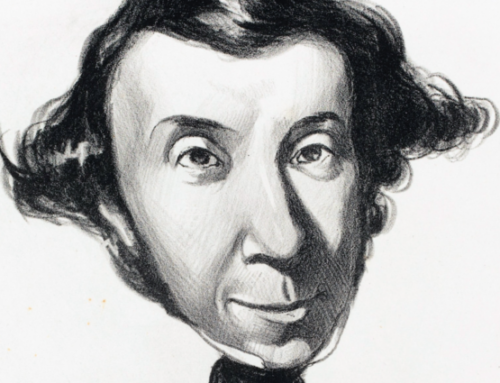 Religion for Atheists: A Nonbeliever’s Guide to the Uses of Religion by Alain de Botton.
Religion for Atheists: A Nonbeliever’s Guide to the Uses of Religion by Alain de Botton.
When I learned that Alain de Botton had written a book with the title, Religion for Atheists: A Nonbeliever’s Guide to the Uses of Religion I thought, why of course he has. I was introduced to de Botton through, The Architecture of Happiness—a book that really is about how architecture can make us happy. Since then I’ve read all his books. And even though he never wears his atheism on his sleeve, in one of those books—The Consolations of Philosophy (nod towards Boethius)—he did slip the arm-band on. When four out of six of the philosophers you highlight are Epicurus, Montaigne, Schopenhauer, and Nietzsche, you have declared yourself.
The New Atheist declaim with much spittle that religion is a very bad thing. Even some Christians wring their hands and insist that Christianity is not actually a religion at all. We are informed that what looks like a religion is really nothing more than being on good terms with Jesus.
De Botton thinks this is all sadly misguided. Religion is not all that bad—it has just taken up some bad ideas. And when it comes to the “Christianity is not a religion” thing, de Botton would gladly take our Christianity off our hands if we could truly get Christ out of it.
De Botton’s book begins with the surprising concession (replete with examples) that contemporary atheism wants for wisdom. Its art is ugly, its commerce degrading, its educational methodology too cerebral, its politics too libertarian, its psychology too sunny, its projects too optimistic. Religion, on the other hand, may be encumbered with a lot of superstitious nonsense, but when it comes to the stuff of life it is clear-eyed and realistic about human nature.
Recognizing the need to reassure his fellow travelers before beginning, de Botton starts with a pillory of religion in a chapter entitled, Wisdom without Doctrine. Mercifully, further sermons to the choir are few and far between. Unfortunately, after the obligatory harangue, the book manages to mix much secular silliness in with the religious wisdom. The silliness comes in the form of de Botton’s advice. Since he cannot abide the lesson that should be taken from the sorry state of secular culture—namely that it is the true fruit of atheism—he proffers naïve and superficial prescriptions gleaned from religious practices. At times these are downright hilarious, as for example when he proposes that public readings of Montaigne could be conducted in the mode of the call and response of Black Pentecostal preaching. Like many irreligious people de Botton has almost no understanding of how religious communities actually form and operate. A reading of his manuscript by a Rabbi or a Priest prior to publication could have ferreted out some of the nonsense.
De Botton has another disadvantage when it comes to his project. While he acknowledges the purported historical basis of religious practices—the Exodus or the Resurrection come to mind—there is no corollary for atheists. Atheism must live on the thin gruel of a negation; but that is what de Botton wants to get away from. From whence does the binding force come? If atheism is right in saying both history and material reality are essentially meaningless, then everything must devolve into the subjective. We are left with personal histories and the autonomy of, Our Bodies, Ourselves.
Yet, between sermons to the choir and some silly advice, there is some excellent analysis. Although religion is reduced to morality and consolation we must concede it does have plenty of each. There are gems of insight throughout that justify the cost of the book.
The greatest challenge the book presents to Protestants though is de Botton’s contempt for what we may call Reformed aesthetics—or the lack thereof. Like his patron saint Montaigne, de Botton is a generalist, but his first love is the visual arts and he is an excellent critic. He has weighed Protestants in his balances and found them wanting. He wants an atheism that appeals to the senses. And when it comes to the senses the panoply of Catholicism is hard to beat. Doctrine has always been the preoccupation of Protestantism. And as his opening chapter indicates, he believes he has no need of what Protestants specialize in. Still, it ought to give Protestants pause—how do those of us who have not swum the Tiber respond to his accusation that where Protestantism flourishes visual ugliness follows? Do Protestants really believe words are the only vehicles of meaning as he claims?
I think not. But Protestants do not need yet another book to make the point. What they need to do is make some beautiful things and let them do the talking.
Books mentioned in this essay may be found in The Imaginative Conservative Bookstore. A version of this article originally appeared in Modern Reformation.







Brilliant, as always.
Nothing beats a good book review. Very interesting. (I will look up Botton’s architecture book as well!)
I’m not sure what an atheism that appeals to the senses would look like. Blank canvases or silent hymns might be an effective depiction of atheism’s most fundamental tenet, but would be a bit boring and unoriginal.